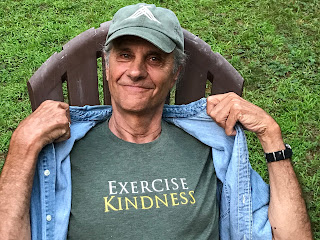Making it “Real” for the Middle School Mind
By Kiri Harris, Dean of Students and Sixth Grade Teacher at Greene Street
Friends School in Philadelphia, PA
Our youngest
students seem to slide so contentedly along the stream of Quaker beliefs shaping
their days. They appear shipshape within the structure carved out by this
stream, and they aren’t likely to question its direction or source. When Samuel
Taylor Coleridge wrote about “a willing suspension of disbelief,” he also called
the concept “poetic faith” (1817, Biographia
Literaria). To my imagination this is what carries our youngest students
along – pure, poetic faith in wonders such as peace, equality, and Light.
Disbelief likes
to make its entrance in middle school. You start to see faint flickers of
skepticism, or eyes glazing over at the mention of peace. It’s a delicate
entrance, because disbelief can easily be pushed into the wings if not encouraged
to find its voice. For the middle school mind – ready to see all the gradations
of gray – Quaker ideals on their own can start to seem airy, implausible,
precious or childish. If we talk only peace without also exploring the shades
of conflict, we risk losing our students’ full trust. My sixth graders recently
floored me with their comments on the benefits of conflict. To their minds, at
their age, “conflicts make you who you are.” Middle school kids need to see
Quaker ideals in three-dimensions.
Last year, as
part of a developing plan to teach Quakerism more completely at Greene Street
Friends, we brought Quaker history to life for our middle school – one “Big
Quake” at a time. Teachers researched and portrayed pivotal Quakers in a series
of seven assemblies. During winter, we met George Fox, Margaret Fell, Mary
Dyer, William Penn, John Woolman, Lucretia Mott and Bayard Rustin. As hoped,
the messages pitched in first person (and in costume) by teachers were “made to
stick” (Heath & Heath, 2007) because they were delivered as stories hinging
on concrete details.
For example, students
loved learning that Margaret Fell adored bright colors so much she had the dyer
make custom sea-green and sky colored
stockings for her daughters. According to one anecdote, when Fell wore a red
dress to Meeting and was labeled “gaudy” by another Quaker woman for not dressing
plainly enough, she retorted: “It’s silly, poor gospel to question my dress.”
This feisty moment (not to mention Fell’s initial questioning of the Quaker
dress code) instantly earned her “kindred spirit status” with our twentieth
century audience. Once that personal bond clicked into place, students were more
on board to cheer about Fell’s important, impressive work for women’s rights
and freedom of conscience.
Last year’s
series culminated in a “Quaker Olympics,” with mixed-age teams of students
rotating through multi-modal stations, applying, connecting and synthesizing information
about the seven “Big Quakes.” Introducing and celebrating these Quakers’ lives in
this way has energized students and faculty alike. We’ll add a new series of
speakers to match our testimony themes for each upcoming year. It’s a start. With
enough three-dimensional examples, maybe we’ll even set the stage for a
re-entrance of poetic faith.


Comments
Post a Comment